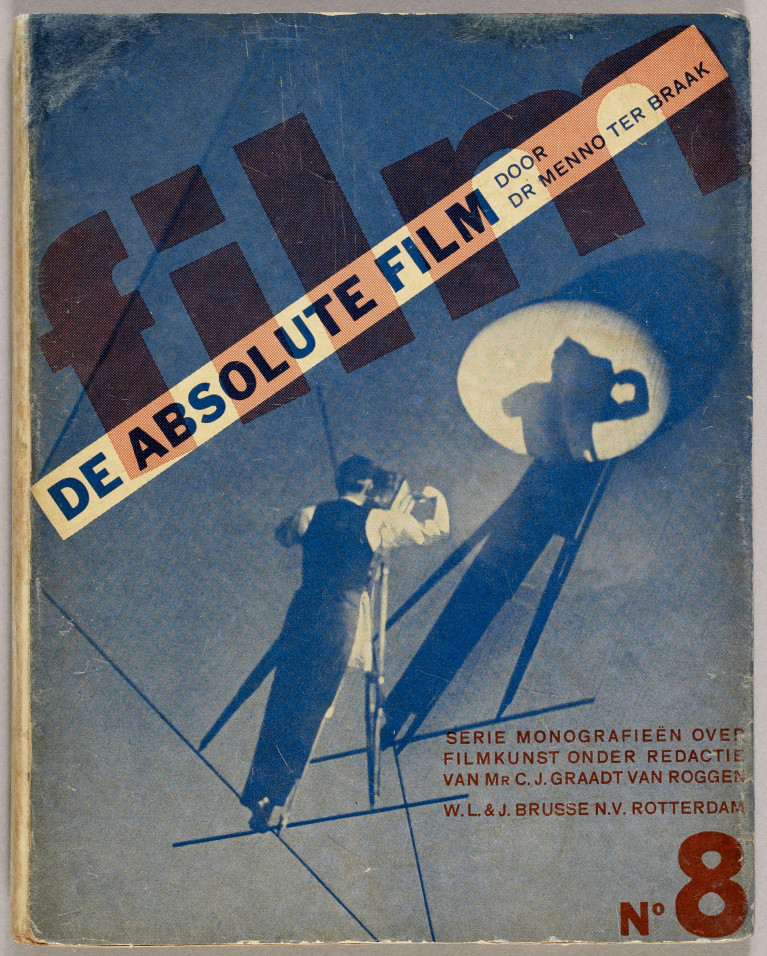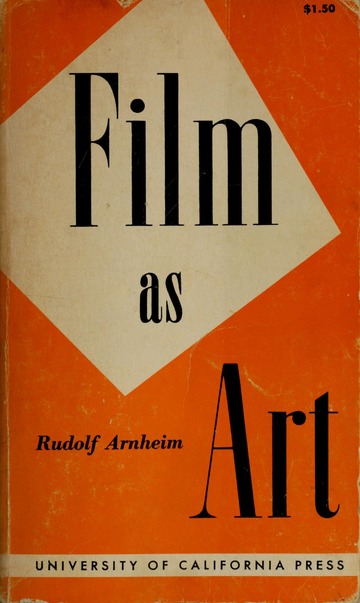Series of Monographs on Cinema, 10 vols. (1931–33) [NL]
Filed under book | Tags: · abstract cinema, avant-garde, cinema, experimental film, film, film history, film sound, film theory, graphic design, montage, silent cinema


This set of monographs on early twentieth-century film is as important for the discourses on cinema, as it is for the graphic design.
Each volume has a cover created by the Dutch “typotekt” Piet Zwart, who had multiple careers as an interior designer, industrial design, commercial typographer, photographer, critic and lecturer. At the close of the twentieth century, Zwart was named ‘Designer of the Century’ by the Association of Dutch Designers.
Originally planned in twelve volumes, the last two in the series were not published: De techniek van de kunstfilm by M.T.H. Franken and Joris Ivens and Filmreclame by Piet Zwart.
Film: die serie monografieën over filmkunst
Series edited by C.J. Graadt van Roggen
Cover design Piet Zwart
Publisher W.L. & J. Brusse’s Uitgeversmaatschappij, Rotterdam, 1931-33
via Bibliothèque Kandinsky
Wikipedia (NL)
1 Het linnen venster, by C.J. Graadt van Roggen (1931, 72 pp, 71 MB)
2 Dertig jaar film [Thirty Years of Film], by L.J. Jordan (1932, 79 pp, 73 MB)
3 Nederlandsche filmkunst, by Henrik Scholte (1933, 64 pp, 63 MB)
4 Russische filmkunst, by Th. B.F. Hoyer (1932, 84 pp, 85 MB)
5 Duitsche filmkunst [German Cinema], by Simon Koster (1931, 75 pp, 71 MB)
6 Fransche filmkunst, by Elisabeth de Roos (1931, 59 pp, 61 MB)
7 Amerikaansche filmkunst, by Jo Otten (1931, 70 pp, 71 MB)
8 De absolute film, by Menno ter Braak (1931, 50 pp, 50 MB), HTML (at DBNL)
9 De komische film, by Constant van Wessem (1931, 56 pp, 49 MB)
10 De geluidsfilm [Sound Film], by Lou Lichtveld (1933, 79 pp, 76 MB), HTML (at DBNL)
Rudolf Arnheim: Film as Art (1932/1957)
Filed under book | Tags: · chronophotography, cinema, film, film sound, film theory, montage, photography, silent cinema

“This is a book of standards, a theory of film. The greater part of it is an adaptation of “Film als Kunst,” first published in 1932 in the original German and in English by Faber and Faber in 1933 – an edition long out of print but still in demand because it raises fundamental questions that the intervening years have by no means answered. This edition expands the original translation by four essays.”
Originally published as Film als Kunst by Ernst Rowohlt, Berlin, 1932.
Publisher University of California Press, 1957
ISBN 0520000358, 9780520000353
230 pages
Michel Chion: The Voice in Cinema (1984–) [EN, ES]
Filed under book | Tags: · cinema, film, film history, film sound, film theory, sound recording, voice

“How can a voice whose source is never seen—such as Hal in 2001: A Space Odyssey or the mother of Norman Bates in Psycho—have such a powerful hold on an audience? When does “synchronized sound” fail to link bodies to their voices, and how do such great stylists of sound film as Jacques Tati, Kenji Mizoguchi, and Marguerite Duras deploy the power of the voice?
In this brilliant essay, Michel Chion, internationally cited authority on the history and poetics of film sound, examines the human voice in cinema. The Voice in Cinema begins with the phenomenon of film’s hidden, faceless voices and their magical powers, particularly in the context of Lang’s Testament of Dr. Mabuse. Chion then explores subjective voices, bonding and entrapment by telephone, voice-thieves, screams (male and female), siren calls, and the silence of mute characters-all uniquely cinematic deployments. In conclusion, Chion considers “the monstrous marriage of the filmed voice and body” as embodied in Norman Bates. Claudia Gorbman’s fluent translation retains Chion’s sophisticated and accessible style, introducing readers to a distinct and paradigm-changing voice on film.”
First published as La voix au cinéma, Cahiers du Cinema, Paris, 1984.
English edition
Edited and translated by Claudia Gorbman
Publisher Columbia University Press, 1999
ISBN 0231108222, 9780231108225
183 pages
Review: Tim Anderson (Echo, 2000).
Publisher (EN)
The Voice in Cinema (English, trans. Claudia Gorbman, 1999, updated on 2020-9-19)
La voz en el cine (Spanish, trans. Maribel Villarino Rodriguez, 2004, added on 2020-9-19)

